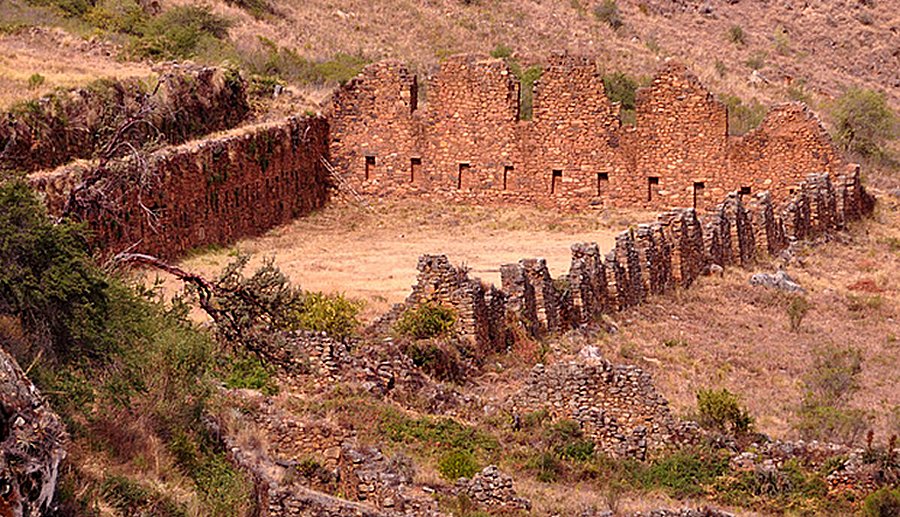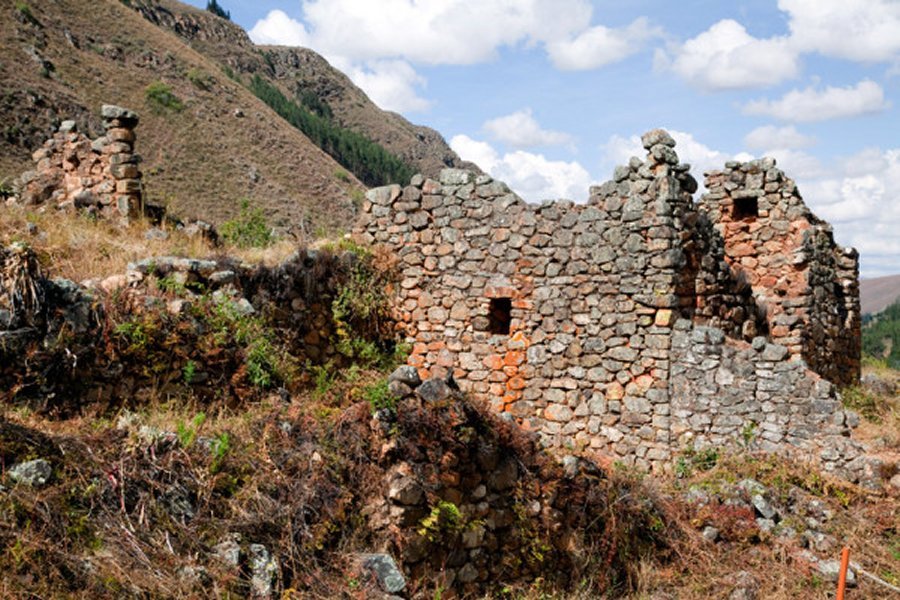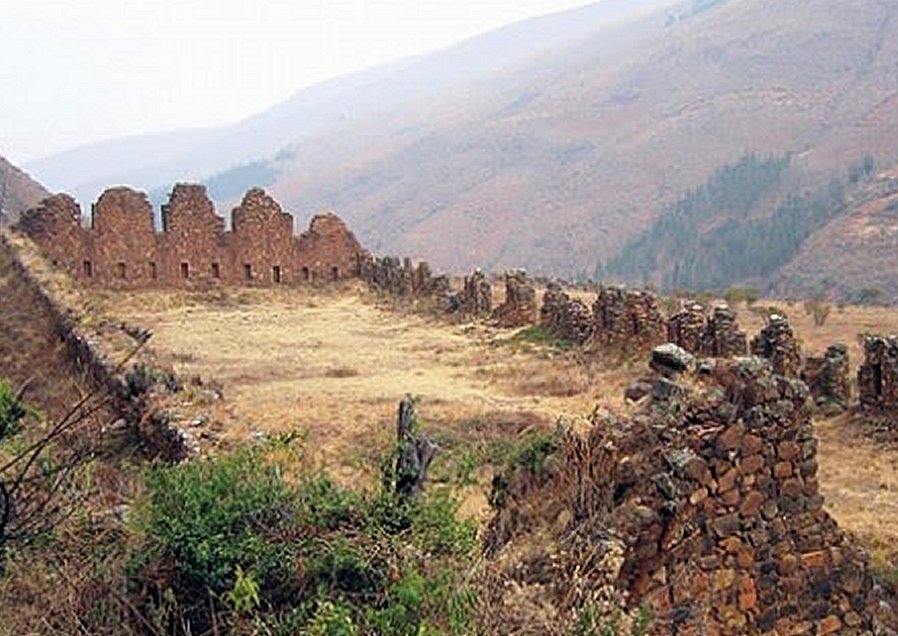Inca Llajta: Largest And Most Impressive Inca Complex In Bolivia
A. Sutherland - AncientPages.com - Inca Llajta (in Quechua means ‘Inca Town’) is considered the largest and most impressive Inca military complex in Bolivia, which served as the most eastern fortress of the large Inca-empire. The fort is strategically located in a mountain range (2,900 to 3,200 meters above sea level).
Whether Inca Llajta was built against attack by the Indian nation, Chiriguanos, who, as records say, were the toughest opposition the Spaniards ever faced in the center of South America, or against the increasing Spanish pressure in the area – is unclear. Photo via Explore Pangea
Around 1470, the Incas took residence in this stone fortress and were present there until 1525.
It is unclear, whether Inca Llajta (Inkaltajta ) was built against attacks organized by the Indian nation, Chiriguanos. According to ancient records, Chiriguanos people represented the toughest opposition the Spaniards ever faced in the center of South America.
Another possibility is that Inca Llajta was constructed for protection against the increasing Spanish pressure in the area.
According to the earliest accounts, the Indian tribe, Chiriguanos of the Eastern lowlands had their origin in migration of Guarani people from the lands located to the east of the Paraguay River.
Destroyed by time and the Spanish Conquistadors, Inca Llajta remains in ruins.
Inca Llajta was ordered to be built by the Inka Tupac Yupanqui (in Quechua) "noble Inca accountant." Yupanqui was the eleventh Sapa Inca (1471–93) of the Inca Empire, and tenth of the Inca civilization.
His father was Pachacuti, the ninth Sapa Inca (1418–1471/1472) of the Kingdom of Cusco, and his son was Huayna Capac also the famous and powerful Inca ruler.
This fascinating historical Bolivian place was discovered in 1913 by Erland Nordenskiold, a Swedish archaeologist and anthropologist who focused his research on the prehistory of South America. Nordenskiold found the fortress in ruins as the town and its fortress were destroyed by the Spanish Conquistadors. He measured and mapped the ruins of Inca Llajta.
Inca Llajta was a military outpost to protect the region from raids by the unconquered Indian tribe, Chiriguanos of the Eastern lowlands, some believe.
Even if the complex is in ruins, it still remains an impressive example of architectural engineering of Inca, especially Inca Llajta’s defensive wall.
Interestingly, the original name of the complex of Inca Llajta has been lost a long time ago.
There are huge, zigzag defensive walls still standing, a network of dormitories, a prison, some remains of a strange tower that could have been an "intiwatana" (birth of the Sun), in which the seasonal changes were registered and were made other astronomical observations.
There are also remains of the largest Incan building to have ever been found that are still clearly visible. It is the kallanka’ (Kallanca), Inca Llajta’s most noteworthy structure, measuring 80 meters by 25 meters, with the roofed enclosure supported by massive columns and probably utilized for military purposes.
It is located on an ejection cone, in the strong almost completely inaccessible ravine. The Inca builders used trapezoidal shapes and the geometric figure characteristic of these particular ruins is the trapeze. ("La Cancha") or patio, is a polyfunctional mythical space, which most probably had multiple functions.
Outside the structure, there is a large boulder, probably a speakers’ platform.
Written by – A. Sutherland - AncientPages.com Senior Staff Writer
Copyright © AncientPages.com All rights reserved. This material may not be published, broadcast, rewritten or redistributed in whole or part without the express written permission of AncientPages.com
More From Ancient Pages
-
 On This Day In History: Archbishop Thomas Becket Murdered – On Dec 29, 1170
News | Nov 29, 2016
On This Day In History: Archbishop Thomas Becket Murdered – On Dec 29, 1170
News | Nov 29, 2016 -
 Ancient Mystery Of Leti – A Homo Naledi Child Of Darkness Discovered In The Rising Star Cave System
Archaeology | Nov 6, 2021
Ancient Mystery Of Leti – A Homo Naledi Child Of Darkness Discovered In The Rising Star Cave System
Archaeology | Nov 6, 2021 -
 Undeciphered Ancient Symbols On Boulders In Pennsylvania And New England Could Be An Ancient Diary Of Forgotten Civilizations And Events
Featured Stories | Jul 4, 2024
Undeciphered Ancient Symbols On Boulders In Pennsylvania And New England Could Be An Ancient Diary Of Forgotten Civilizations And Events
Featured Stories | Jul 4, 2024 -
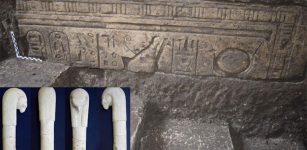 Ancient Tools Used In Religious Rituals In Honor Of Goddess Hathor Discovered In Egypt
Archaeology | Sep 27, 2021
Ancient Tools Used In Religious Rituals In Honor Of Goddess Hathor Discovered In Egypt
Archaeology | Sep 27, 2021 -
 Djémila – Lost City Of The Ancient Kingdom Of Numidia
Featured Stories | Jun 28, 2021
Djémila – Lost City Of The Ancient Kingdom Of Numidia
Featured Stories | Jun 28, 2021 -
 On This Day In History: Execution Of Saints Crispin And Crispinian – On Oct 25, 286
News | Oct 25, 2016
On This Day In History: Execution Of Saints Crispin And Crispinian – On Oct 25, 286
News | Oct 25, 2016 -
 Torquetum: Sophisticated Medieval Astronomical Instrument
Ancient History Facts | Jul 12, 2018
Torquetum: Sophisticated Medieval Astronomical Instrument
Ancient History Facts | Jul 12, 2018 -
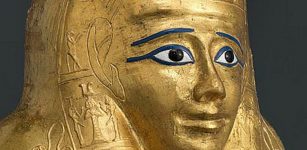 Gilded Coffin Of Nedjemankh, Priest Of Ram-God Heryshef Recovered By Egyptian Authorities
Archaeology | Mar 12, 2019
Gilded Coffin Of Nedjemankh, Priest Of Ram-God Heryshef Recovered By Egyptian Authorities
Archaeology | Mar 12, 2019 -
 Ancient Marble Statue Of Sphinx Discovered In Tang Dynasty Tomb
Archaeology | Dec 16, 2015
Ancient Marble Statue Of Sphinx Discovered In Tang Dynasty Tomb
Archaeology | Dec 16, 2015 -
 DNA From Mysterious Hominin In China Suggests Native Americans’ East Asian Roots
Archaeology | Jul 14, 2022
DNA From Mysterious Hominin In China Suggests Native Americans’ East Asian Roots
Archaeology | Jul 14, 2022 -
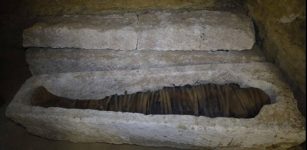 Tombs With Sarcophagi Of High Priests Including One Dedicated To Sky God Horus Unearthed In Egypt
Archaeology | Jan 31, 2020
Tombs With Sarcophagi Of High Priests Including One Dedicated To Sky God Horus Unearthed In Egypt
Archaeology | Jan 31, 2020 -
 ‘Our Way Model’ Reveals How First Anatomically Modern Humans Populated Europe
Human Beginnings | Oct 7, 2024
‘Our Way Model’ Reveals How First Anatomically Modern Humans Populated Europe
Human Beginnings | Oct 7, 2024 -
 Strange Engraving Made By Knights Templar In French Village – It Doesn’t Make Sense Or Does It? – Part 2
Ancient Mysteries | Oct 9, 2019
Strange Engraving Made By Knights Templar In French Village – It Doesn’t Make Sense Or Does It? – Part 2
Ancient Mysteries | Oct 9, 2019 -
 Archaeologists Uncover More Hidden Ancient Secrets In Saqqara, Egypt
Archaeology | Jan 6, 2025
Archaeologists Uncover More Hidden Ancient Secrets In Saqqara, Egypt
Archaeology | Jan 6, 2025 -
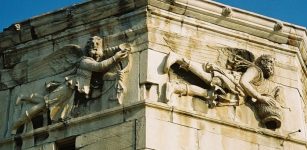 Tower Of The Winds And Daydreaming Of Andronicus Of Cyrrhus
Featured Stories | May 14, 2019
Tower Of The Winds And Daydreaming Of Andronicus Of Cyrrhus
Featured Stories | May 14, 2019 -
 Did Etruscans Solve The Mystery Of Synchronicity And The Secret Language Of The Stars?
Ancient Mysteries | Jul 5, 2018
Did Etruscans Solve The Mystery Of Synchronicity And The Secret Language Of The Stars?
Ancient Mysteries | Jul 5, 2018 -
 On This Day In History: King Louis XVI Of France Was Put On Trial For Treason – On Dec 11, 1792
News | Dec 11, 2016
On This Day In History: King Louis XVI Of France Was Put On Trial For Treason – On Dec 11, 1792
News | Dec 11, 2016 -
 Evidence Europeans Made Leather Clothing 40,000 Years Ago – New Study
Archaeology | Apr 17, 2023
Evidence Europeans Made Leather Clothing 40,000 Years Ago – New Study
Archaeology | Apr 17, 2023 -
 Evidence Of An Unknown Ancient Civilization In The Yucatan?
Featured Stories | Apr 6, 2024
Evidence Of An Unknown Ancient Civilization In The Yucatan?
Featured Stories | Apr 6, 2024 -
 When Science, Spirituality and Magic Meet – Re-Discovering Old Ancient Knowledge
Featured Stories | Feb 18, 2020
When Science, Spirituality and Magic Meet – Re-Discovering Old Ancient Knowledge
Featured Stories | Feb 18, 2020

